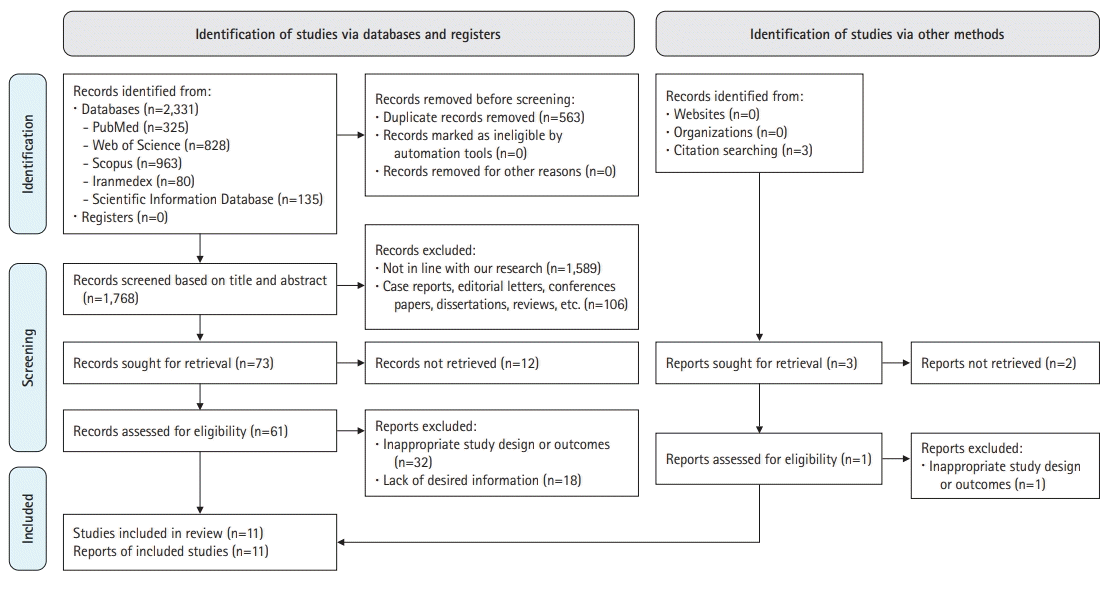2. Shojaei F, Shirazi M. Investigating the relationship between workaholism and occupational stress and life quality among female teachers at elementary schools (a case study of Torbat-e Jam). Int J Hum Cult Stud. 2016; 1:373–381.
3. Aquino E, Lee YM, Spawn N, Bishop-Royse J. The impact of burnout on doctorate nursing faculty’s intent to leave their academic position: a descriptive survey research design. Nurse Educ Today. 2018; 69:35–40.
https://doi.org/10.1016/j.nedt.2018.06.027.
4. Kizilci S, Erdogan V, Sozen E. The influence of selected personality and workplace features on burnout among nurse academics. Turk Online J Educ Technol. 2012; 11:307–314.
6. Wu F, Ren Z, Wang Q, He M, Xiong W, Ma G, Fan X, Guo X, Liu H, Zhang X. The relationship between job stress and job burnout: the mediating effects of perceived social support and job satisfaction. Psychol Health Med. 2021; 26:204–211.
https://doi.org/10.1080/13548506.2020.1778750.
9. Xu X, Chen L, Yuan Y, Xu M, Tian X, Lu F, Wang Z. Perceived stress and life satisfaction among chinese clinical nursing teachers: a moderated mediation model of burnout and emotion regulation. Front Psychiatry. 2021; 12:548339.
https://doi.org/10.3389/fpsyt.2021.548339.
10. Fernandez-Suarez I, Garcia-Gonzalez MA, Torrano F, Garcia-Gonzalez G. Study of the prevalence of burnout in university professors in the period 2005-2020. Educ Res Int. 2021; 2021:7810659.
https://doi.org/10.1155/2021/7810659.
11. Maslach C, Leiter MP. Understanding the burnout experience: recent research and its implications for psychiatry. World Psychiatry. 2016; 15:103–111.
https://doi.org/10.1002/wps.20311.
13. Docherty-Skippen SM, Hansen A, Engel J. Teaching and assessment strategies for nursing self-care competencies in Ontario’s nursing education programs. Nurse Educ Pract. 2019; 36:108–113.
https://doi.org/10.1016/j.nepr.2019.03.011.
14. Page MJ, McKenzie JE, Bossuyt PM, Boutron I, Hoffmann TC, Mulrow CD, Shamseer L, Tetzlaff JM, Akl EA, Brennan SE, Chou R, Glanville J, Grimshaw JM, Hrobjartsson A, Lalu MM, Li T, Loder EW, Mayo-Wilson E, McDonald S, McGuinness LA, Stewart LA, Thomas J, Tricco AC, Welch VA, Whiting P, Moher D. The PRISMA 2020 statement: an updated guideline for reporting systematic reviews. Int J Surg. 2021; 88:105906.
https://doi.org/10.1016/j.ijsu.2021.105906.
16. Downes MJ, Brennan ML, Williams HC, Dean RS. Development of a critical appraisal tool to assess the quality of cross-sectional studies (AXIS). BMJ Open. 2016; 6:e011458.
https://doi.org/10.1136/bmjopen-2016-011458.
17. Batista JB, de Oliveira Barros E, Holmes ES. Burnout syndrome and quality of life in nursing professors of a public university. Int Arch Med. 2016; 9:1–11.
https://doi.org/10.3823/1970.
20. Heydari A, Ahanchian MR, Mahdizadeh SM. Survey the burnout and its effect in gwork environment factors on nursing faculty members in Khorasan Razavi province in 1391. J Sabzevar Univ Med Sci. 2014; 21:17–27.
21. Mohammed HM, Elsayed NM, Gaber MA. Job stressors and burnout and coping strategies among faculty members and assistants in Faculty of Nursing at Zagazig University. Zagazig Nurs J. 2014; 10:156–171.
https://doi.org/10.12816/0029310.
24. Dargahi H, Nomani F, Irandoost K. Study of burnout syndrome among faculty members and lecturers in one of the Schools of Tehran University of Medical Sciences. Payavard Salamat. 2019; 12:467–475.
25. Seo JH, Bae HO, Kim BJ, Huh S, Ahn YJ, Jung SS, Kim C, Im S, Kim JB, Cho SJ, Han HC, Lee YM. Burnout of faculty members of medical schools in Korea. J Korean Med Sci. 2022; 37:e74.
https://doi.org/10.3346/jkms.2022.37.e74.
27. Seo JH, Kim B, Bae HO, Im SJ, Kim KH. Burnout among medical school faculty members: incidence and demographic characteristics at three medical schools in the Busan and Gyeongnam area of Korea. Korean Med Educ Rev. 2014; 16:67–76.
https://doi.org/10.17496/kmer.2014.16.2.067.
28. Roghanizad N, Vatanpoor M, Seddigh Oraee SN, Sharifi V, Abbasi M. Prevalence of burnout syndrome and its three dimensions in dental faculty members of Azad Dental University in 2008. J Islam Dent Assoc Iran. 2013; 25:87–93.




 PDF
PDF Citation
Citation Print
Print





 XML Download
XML Download